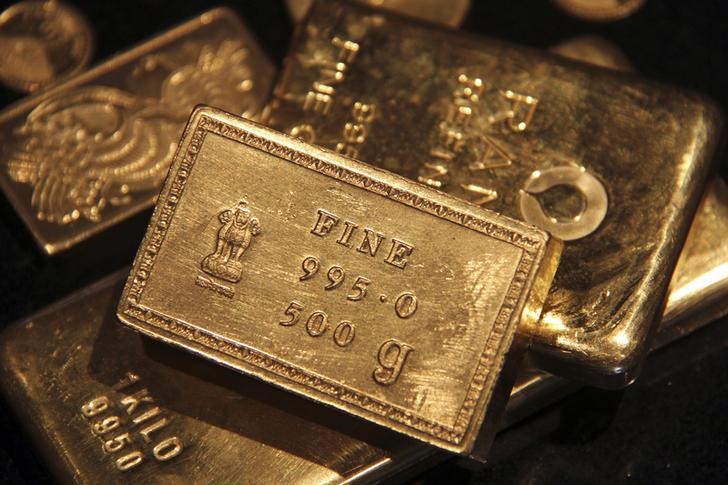By Barani Krishnan
Investing.com -- Gold’s resolve to stay above $1,800 came under renewed attack on Tuesday after Federal Reserve Chair Jerome Powell warned that U.S. rate hikes could end up being a lot higher than once imagined.
Gold for April delivery on New York’s Comex settled Tuesday’s trading at $1,820 an ounce, down $34.60, or 1.9%. The session low was $1,817.25, marking the fourth time in less than a fortnight that a benchmark gold contract on Comex came near to testing its hold on the $1,800 perch.
The spot price of gold, more closely followed than futures by some traders, was at $1,815.84 by 15:38 ET (20:38 GMT), down $30.88, or 1.7% on the day. The session bottom for spot gold was $1,812.80.
“Gold dropped like a hot potato, invalidating a potentially bullish structure which was widely believed to be capable of running through $1,880 and $1,900 in the short term,” said Sunil Kumar Dixit, chief technical strategist at SKCharting.com.
“Weakness has been palpable since gold failed to reclaim its hold on $1,860, giving gold to the bears on a platter. With spot gold having gone to a bottom below $1,813 today, the downside can extend to $1,788, and $1,828-$1,832 has turned into resistance, though the keys to that will be held by Friday’s U.S. NFP report.”
The NFP, or nonfarm payrolls, report for February is expected to show that the United States added 203,000 jobs last month versus January’s 528,000. If the jobs number comes in significantly higher, it could embolden the Fed to be even more aggressive with rate hikes.
Powell warned that U.S. interest rate hikes could end up being a lot higher than once imagined, saying the fight against inflation had a long way to go.
“The ultimate level of interest rates is likely to be higher than previously anticipated,” Powell said in the Fed’s semi-annual testimony to Congress. “If the totality of the data were to indicate that faster tightening is warranted, we would be prepared to increase the pace of rate hikes.”
Soon after the release of Powell’s speech before its delivery in Congress, the Fed-funds-futures — which serves as a barometer for upcoming rate decisions — priced in a 50-basis point hike for March 22, when the central bank is to decide on rates again. Prior to that, the Fed had been expected to adopt a hike of just 25 basis points.
“It's interesting that he's leaving the 25 vs 50 bps debate open,” economist Adam Button said, referring to Powell’s comments, in a post on the ForexLive forum. “This is a greenlight for [greater] hiking.”
The Consumer Price Index, a broad gauge of inflation, hit a 40-year high of 9.1% in the United States during the year to June. It has moderated since, to an annualized growth of 6.4% in January, but remains well above the Fed’s target of just 2% per year.
To clamp down on runaway price growth, the Fed added 450 basis points to interest rates since March last year via eight hikes. Prior to that, rates stood at nearly zero after the global outbreak of the coronavirus in 2020.
The Fed’s first post-COVID hike was a 25-basis point increase in March last year. It then moved up with a 50-basis point increase in May. After that, it executed four back-to-back jumbo-sized hikes of 75 basis points from June through November. Since then, it has returned to a more modest 50-basis-point increase in December and a 25-basis-point hike in February.
“Although inflation has been moderating in recent months, the process of getting inflation back down to 2 percent has a long way to go and is likely to be bumpy,” Powell said. “Recent economic data, particularly inflationary pressures, have been stronger than expected.”
One of the Fed’s biggest challenges has been stellar jobs data as the nation’s labor market continues to stun economists with stupendous growth month after month.
Non-farm payrolls growth for January was the strongest since July 2022, when the Labor Department reported jobs creation nearly three times more than the forecast growth of 188,000. The outperformance pushed down the unemployment rate to 3.4% from December’s 3.5%.
